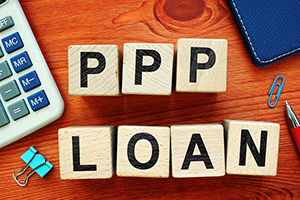
The American Institute of Certified Public Accountants (AICPA) issued guidance for nongovernmental entities on accounting for forgivable Paycheck Protection Program (PPP) loans in accordance with accounting principles generally accepted in the U.S. (US GAAP). The guidance applies to both for-profit business entities and not-for-profit entities and provides entities with options for accounting for PPP loan forgiveness as either debt or a grant.
Accounting for PPP loan funds as debt is available to all entities, regardless of whether the entity expects to repay the PPP loan or believes it represents, in substance, a grant that is expected to be forgiven. If an entity elects this option, the initial cash inflow from the PPP loan will be recorded as debt and interest will be accrued at the fixed 1% interest rate on a monthly basis. The PPP loan liability will be derecognized from the entity’s balance sheet only upon formal forgiveness of the debt by the U.S. Small Business Administration or as principal payments are made on the outstanding PPP liability. The resulting gain on forgiveness of debt will be presented as other income and will be measured based on the net carrying value of the PPP loan, which includes accrued interest and any deferred financing costs relating to the forgivable portion of the loan. The costs of qualified expenses under the PPP program (payroll, covered rent, utilities, and mortgage interest) should continue to be accounted for through operating expenses, consistent with existing policies.
Entities that expect to meet the PPP loan eligibility criteria for forgiveness and conclude that the PPP loan represents, in substance, a grant that is expected to be forgiven may elect to account for the PPP loan funds received as a grant.
- If a for-profit business entity elects this option, the initial cash inflow from the PPP loan will be recorded as deferred grant income. Once there is reasonable assurance that the forgiveness conditions will be met, the entity will reduce the deferred grant income balance, with the offset through earnings, over the period of time that the entity recognizes the related eligible expenses. The entity may elect to record the offsetting credit through earnings as either other income or as a reduction of the related operating expenses.
- If a not-for-profit business entity elects this option, the initial cash inflow from the PPP loan will be recorded as a refundable advance. Once the conditions of release have been substantially met or explicitly waived, the entity will reduce the refundable advance liability and recognize contribution income. In practice, this will result in recognition of income over time as the entity recognizes the related eligible expenses.
Nongovernmental entities that receive PPP loan funds should adequately disclose their PPP loan accounting policy and the related impact to the financial statements. We will continue to monitor changes and provide updates as additional guidance becomes available. Please check our dedicated COVID-19 page for updated FAQs and articles, and, as always, please reach out to the ML&R team with any questions.





